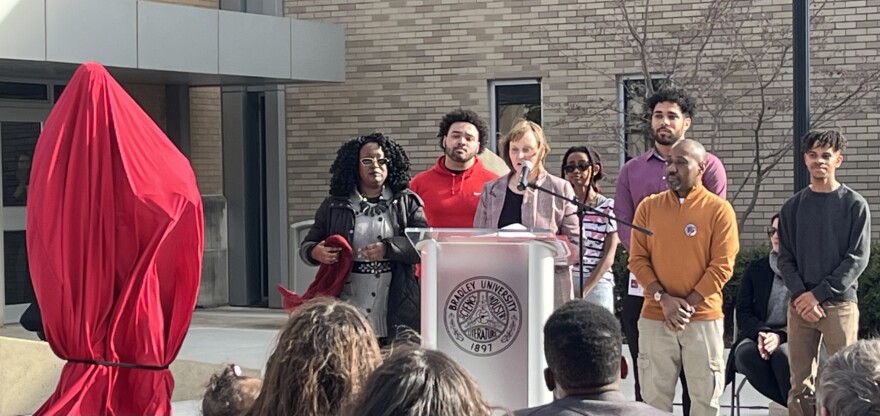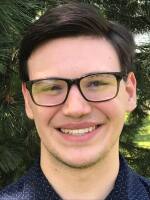A new statue at Bradley University honors the first African American man to serve his country as an astronaut.
Major Robert H. Lawrence, Jr. graduated from Bradley University in 1956. He left Bradley University with a degree in chemistry and turned a college stint in the ROTC into a career in the United States Air Force.
In June 1967, after earning a PhD in physical chemistry at Ohio State University, Lawrence became the first African American astronaut. He was selected for the Air Force's Manned Orbital Laboratory program.
Tragically, Lawrence would never make it to space. He died in Dec. 1967 in a flight training accident at Edwards Air Force Base in California. He was 32 years old.
According to speakers at a Friday ceremony dedicating a bronze statue bearing his likeness, Lawrence showed an aptitude for science very early. He graduated high school at the age of 16. During his time at Bradley, Lawrence was a member of the track team, “chem club” and the historically African American Omega Psi Phi fraternity.
Stephen Lewis, a 1976 Bradley graduate and member of Omega Psi Phi, said Lawrence exemplified the organization’s four cardinal principles: manhood, scholarship, perseverance and uplift.
“Bradley played an essential role in challenging Major Lawrence, both increasing his scholastic aptitude and his capacity for deeper learning,” Lewis said. “Under perseverance, being a responsible citizen who exhibits a spirit of brotherhood, cooperation and humility, a student that had to persevere in both black and white communities.”

As Lewis pointed out, the Civil Rights era had not yet started and segregation was still the law in the states when Lawrence arrived at Bradley in 1952. Lawrence was not allowed to live in the dormitories on campus.
“Robert Lawrence, as a student, had to get comfortable with being uncomfortable,” said Lewis.
Later, during the Civil Rights era in 1956, Lawrence would dedicate his doctoral dissertation to fellow African Americans. Dr. Michelle Fry, department chair of chemistry at Bradley University, quoted the dissertation during the statue’s dedication ceremony.
“‘During the period in which this work was performed, a momentous drive for human rights has been in progress in this country,’” she read. “‘It is my hope that in the conduct and completion of this work, some of the barriers impeding the solution of our sociological, as well as scientific, problems have been removed.’”
Fry read from the dissertation surrounded by current and past recipients of a scholarship named after Lawrence.

Peoria Mayor Rita Ali read a proclamation written in Lawrence’s honor and interim Bradley President Jonathan Michael thanked donors whose contributions made the statue possible.
“This man was rejected several times from NASA and he did not stop. If he would have stopped, we would not have a statue,” said Will Eppes, a descendant of Lawrence.
Eppes’ grandmother was Major Lawrence’s first cousin. Eppes said he grew up surrounded by stories of his famous relative’s accomplishments. Eppes, an actor, started work on a documentary and feature script about Lawrence in 2013, fully committing himself to the project in 2020 after his grandmother passed away.
“He didn’t make any excuses,” said Eppes. “I think the time he was living in might have been a little bit more difficult than now. So if he was able to achieve all these things with no assistance, but rejection, I think this should be a fire underneath us, to not let anything stop us from what our purpose is.”
The statue standing outside Olin Hall on Bradley University’s campus depicts Lawrence in flight gear. He holds a helmet in the crook of one arm and wears a pack on his back.
The bronze likeness was sculpted by Fisher Stolz, Bradley's chair of the Department of Art and Design.
“I’m proud to share a few things with this incredible individual. Coincidentally, we share the same birthday,” said Stolz. “Another is a love for Bradley University and a belief that you can do great things from here.”
Eppes hopes the statue serves as a reminder to Bradley students of what’s possible with perseverance and passion.
“You should be doing things that are not only natural to you, but that you like, that you are passionate about,” he said. “I think we waste a lot of time ... focusing on other things, as far as popularity or how it’s going to be received. I think you should just pursue what comes naturally, something that you love.”


